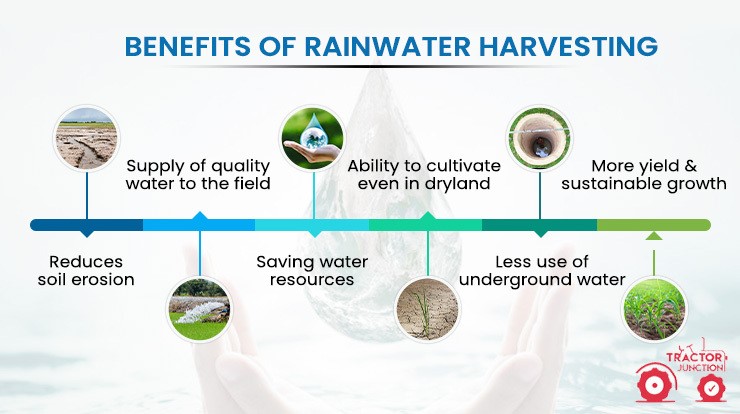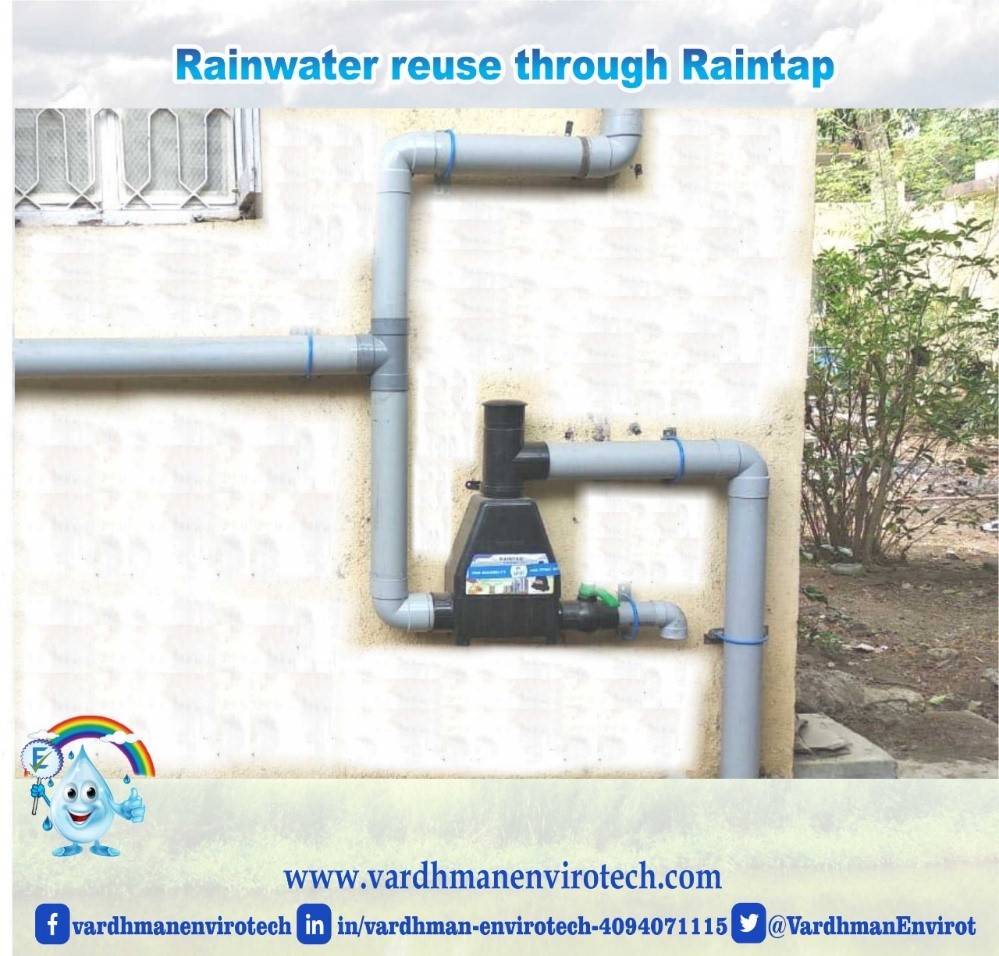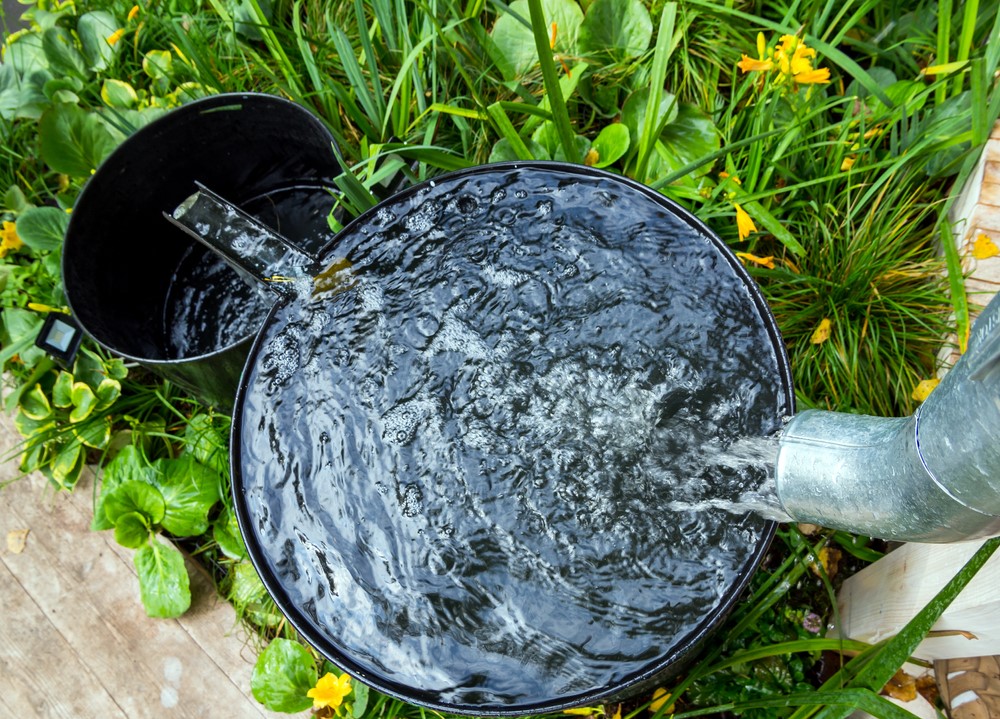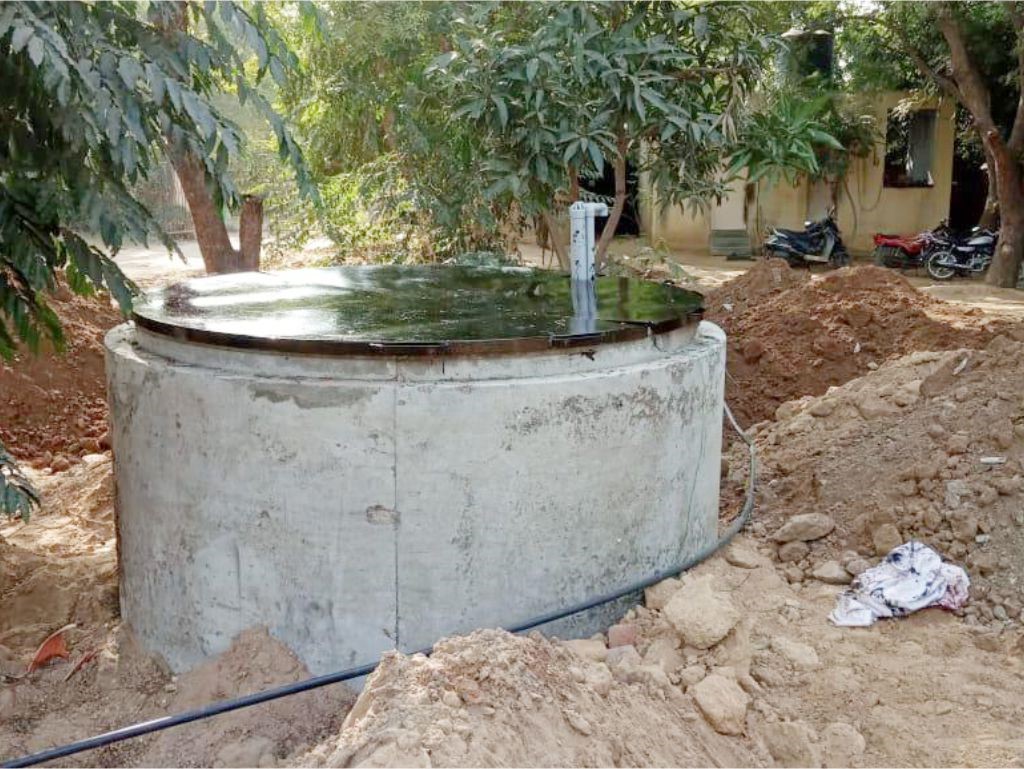Rainwater harvesting is the process of collecting and storing rainwater that falls on rooftops, paved areas, and other surfaces. This harvested water can be used for a variety of purposes, including irrigation, toilet flushing, laundry, and even for drinking with proper treatment. The potential benefits of rainwater harvesting include:

Photo Credit: Tractor Junction
The first and most obvious benefit of rainwater harvesting is cost savings. By collecting and using rainwater, households and businesses can reduce their reliance on municipal water supply and cut down on their water bills. This is particularly beneficial for people who consume large amounts of water, such as those with gardens, lawns, or swimming pools. In some regions, water bills can be quite high, especially during the dry season when water supply is scarce. By harvesting rainwater, people can reduce their reliance on municipal water and save money.
The second benefit of rainwater harvesting is meeting water needs. In many parts of the world, water supply is unreliable, and people have to rely on sources like groundwater or surface water. However, these sources are not always safe or sufficient. By harvesting rainwater, people can ensure a reliable and safe source of water for their household and agricultural needs. Rainwater harvesting can be done at various scales, from small rain barrels for households to large tanks for farms and communities.

Rainwater harvesting also provides environmental benefits. Rainwater harvesting reduces storm water runoff, which can cause flooding, erosion, and water pollution. By capturing and storing rainwater, it can be used for productive purposes, rather than being wasted. This reduces the pressure on natural water sources and helps to conserve them for future use. Additionally, by reducing storm water runoff, rainwater harvesting helps to mitigate the effects of urbanization on the natural water cycle.
Rainwater harvested from rooftops and other surfaces is generally cleaner and softer than groundwater or surface water. It has not come into contact with contaminants in the ground or in rivers and lakes. As a result, rainwater harvested from rooftops and other surfaces can be used for a variety of non-potable uses with minimal treatment. This reduces the strain on municipal water treatment plants, which can be costly to operate and maintain.

Photo Credit: ShutterStock
Finally, rainwater harvesting reduces the strain on municipal water systems. By reducing the demand on municipal water systems, rainwater harvesting can help reduce the strain on infrastructure and help ensure that water is available to meet everyone’s needs, even during periods of drought or other water shortages. This is particularly important in regions with high population growth, where demand for water is increasing rapidly.

In conclusion, rainwater harvesting offers many potential benefits, including cost savings, meeting water needs, environmental benefits, improved water quality, and reduced strain on municipal water systems. It is a sustainable and cost-effective solution that can help ensure water security and improve the quality of life for people living in areas with limited access to water. Governments and communities should encourage the adoption of rainwater harvesting by providing incentives and education programs to raise awareness of its potential benefits.
Vardhman Envirotech
India’s Passionate rainwater company
This article is published on: The Times of India, 13 April, 2023.
We would like to spread this for the benefit of fellow Indians.
